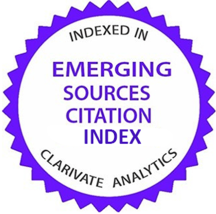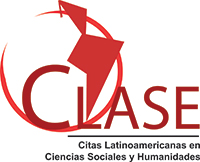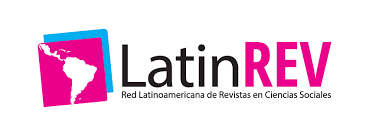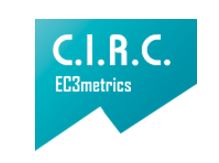Autores/as
Resumen
La doble presencia se originó como concepto para describir el empleo femenino y su legitimación social, junto con la dependencia de las mujeres hacia el trabajo doméstico y familiar. Desde entonces, los estudios de género han empleado este término y otros como segundo turno, doble jornada y doble carga para abordar las demandas del trabajo remunerado y del hogar. Sin embargo, la complejidad de gestionar ambos ámbitos al mismo tiempo, descrito inicialmente por la doble presencia, parece haberse diluido en las diversas formas de operacionalizar estos conceptos. Objetivo: Revisar sistemáticamente las definiciones conceptuales y operacionales de doble presencia y de los conceptos asociados (segundo turno, doble jornada y doble carga). Método: Se condujo una revisión sistemática narrativa, siguiendo las directrices de la declaración PRISMA, cuyo protocolo fue registrado en PROSPERO. Resultados: Se realizó una búsqueda en tres bases de datos (Web of Science, Scopus y SciELO), y se identificaron un total de 569 artículos. De estos, 41 cumperon los criterios de inclusión (estudios empíricos con una definición conceptual u operacional de doble presencia o de conceptos asociados, con datos primarios y publicados en inglés o español). Emergieron seis temas principales asociados a la definición de doble presencia: (1) fenómeno psicosocial observable en como en el doméstico-familiar; (2) experimentado mayoritariamente por mujeres; (3) caracterizado por la sincronía de tareas (4) implica una dificultad para equilibrar las demandas laborales y familiares; (5) representa un riesgo psicosocial; y (6) genera tensiones emocionales y/o consecuencias en la salud física y mental de quien lo experimenta. En cuanto a la operacionalización, se evidenció una brecha entre la definición conceptual y los instrumentos utilizados para la medición. Discusión: La revisión evidencia que los dos componentes distintivos del fenómeno de doble presencia son la sincronía entre lo laboral y doméstico familiar, y las dificultades para equilibrar las demandas de esos ámbitos. Sin embargo, el primer componente ha sido escasamente operacionalizado. Se discute la brecha identificada entre las definiciones conceptuales y su operacionalización.
Palabras clave
Citas
Arraigada, M. C., & Pujol-Cols, L. (2018). Psychometric properties of the Copsoq- Istas 21 Psychosocial Risk Questionnaire and application in Argentine university teachers. Administration Notebooks, 30(55), 97-125. https://doi.org/10.11144/Javeriana.cao30-55.ppcr.
Balbo, L. (1978). La doppia presenza. Inchiesta, 3-11.
Ballakrishnen, S., Fielding-Singh, P., & Magliozzi, D. (2018). Intentional Invisibility: Professional Women and the Navigation of Workplace Constraints. Sociological Perspectives, 62(1), 1-19. https://doi.org/10.1177/0731121418782185.
World Bank (2024). Women, business and the law 2024. World Bank Group. https://wbl.worldbank.org Blanch, A. & Solé, S. (2023). Work-family conflict, wellbeing and strain: Sex differences and children at home. International Journal of Psychology, 58(2), 116-123.
https://doi.ufro.elogim.com/10.1002/ijop.12890
Beermann, B., & Nachreiner, F. (1995). Working shifts-different effects for women and men? Work and Stress, 9(2-3), 289-297. https://doi.org/10.1080/02678379508256565.
Burke, R. & Mckeen, C. (1993). Career Priority Patterns among Managerial and Professional Women. Applied Psychology: An International Review, 42(4), 341-352. https://doi.org/https://doi.org/10.1111/j.1464-0597.1993.tb00749.x
Capellin, P. (1978). Capitalist productive structure and female labor: The conditions of existence of the female labor force in Brazil in Demography and Economics. Demography and Economics, 12(1),37-5.
Carbajal, J. (2018). Patriarchal culture’s influence on women’s leadership ascendancy. The Journal of Faith, Education, and Community, 2(1), 1-23.
Castelao-Huerta, I. (2020). The discreet habits of subtle violence: an approach to the experiences of women full professors in neoliberal times. Gender and Education, 34(2), 216-230. https://doi.org/10.1080/09540253.2020.1815660
Ceballos-Vásquez, P., Cancino-Grillo, M., González-Palacios, Y., & Paravic, T. (2020). Psychosocial risk profile in healthcare workers: An elementary tool for its intervention. Journal of Spanish Association of Occupational Medicine Specialist, 29(4), 323-329.
Charmes, J. (2019). The unpaid care work and the labour market : an analysis of time use data based on the latest world compilation of time-use surveys. International Labour Organization (ILO).
Ciabattari, T. (2021). Sociology of families: change, continuity, and diversity (SAGE Pub- lications Inc., Ed.).
Cortés-Rodas, L., Ruiz-Turizo, M. J., & Flórez-Marín, G. (2021). Women and work: family transformations after their incorporation into the labor scenario. Latin American Family Studies, 13(2), 78-100. https://doi.org/10.17151/rlef.2021.13.2.5. https://doi.org/10.17151/rlef.2021.13.2.5.
Dhameeth, G. S., Wakunuma, K., Männikkö Barbutiu, S., & De Silva, T. D. (2021). Empowerment Through Women Entrepreneurship. Jwee, 2021(1-2), 121-146. https://doi.org/10.28934/jwee21.12.pp121-146.
DeGroot, J. M., & Vik, T. A. (2019). The Weight of Our Household Rests on My Shoulders: Inequity in Family Work. Journal of Family Issues, 41(8), 1258-1281. https://doi.org/10.1177/0192513X19887767
Díaz Carrión, I. A. & Ceyca Lugo, A. (2022). Empowerment and impact of care work on women entrepreneurs in Tijuana (Mexico). Economy, Society and Territory, 22(70), 833-864. https://doi.org/10.22136/est20221735
Dugan, A., & Barnes-Farrell, J. (2018). Working mothers’ second shift, personal resources, and self-care. Community, Work and Family, 23(1), 62-79. https://doi.org/10.1080/13668803.2018.1449732.
Engelhardt, L., Mack, J., Weise, V., Kopp, M., Starke, K. R., & Garthus-Niegel, S. (2023). The COVID-19 pandemic: Implications for work-privacy-conflict and parent-child-bonding in mothers andfathers. Children and Youth Services Review, 155. https://doi.org/10.1016/j.childyouth.2023.107264
Ericsson, U., Pettersson, P., Rydstedt, L., & Ekelund, E. (2021). Work, family life and recovery: An exploratory study of “the third shift.” Work, 70(4), 1131-1140. https://doi.org/10.3233/WOR-213624.
Esparza, M. (2020). Time use, domestic work and the double workday of women in Hermosillo, Sonora Mexico, an analysis from a gender perspective. Work and Society, 21(35), 351-374.
Fardella, C., & Corvalán, A. (2020). Time in work-life conflict: The case of academic women in managerial universities. Psychoperspectives, 19(3), 1-12. https://doi.org/10.5027/psicoperspectivas-Vol19-Issue3-fulltext-2051
Fellegi, Z., Kočí, K., & Benešová, K. (2023). Work and Family Balance in Top Diplomacy: The Case of the Czech Republic. Politics and Gender, 19(1), 220-246. https://doi.org/10.1017/S1743923X21000489.
García, M., Iglesias, S., Saleta, M., & Romay, J. (2016). Psychosocial risks in university teaching staff:diagnosis and prevention. Journal of Work and Organizational Psychology, 32(3), 173-182. https://doi.org/10.1016/j.rpto.2016.07.001
Gontero, S., & Vezza, E. (2023). Women’s labor participation in Latin America: contribution to economic growth and determinants. www.issuu.com/publicacionescepal/stacks
Guadarrama, R. (2006). Identities, resistance and conflict in global chains. Desacatos, 21, 67-82.
Güilgüiruca, M., Meza, K., Góngora, R., & Moya, C. (2015). Psychosocial risk factors and perceived stress in workers of an electrical company in Chile. Occupational Medicine and Safety, 61(238), 57-67.
Hernández, Y., & del Carpio Ovando, P. S. (2023). Difficulties in women mothers of school-age children during COVID-19 confinement. Science UAT, 17(2), 83-94.
Hernández-Limonchi, M. and Ibarra-Uribe, L. (2020). Two incomes, two caregivers. Barriers to workfamily reconciliation. Latin American Journal of Family Studies, 12 (2), 13-26. DOI: 10.17151/rlef.2020.12.2.2.2.
Hochschild, A. (1989). The Second Shift. NY: Avon Books.
Lahiri-Dutt, K., & Sil, P. (2014). Women’s ‘double day’ in middle-class homes in small-town India.Contemporary South Asia, 22(4), 389-405. https://doi.org/10.1080/09584935.2014.979762
Lenneis, V., & Pfister, G. (2016a). Health, physical activity and the body: an inquiry into the lives of female migrant cleaners in Denmark. International Journal of Sport Policy, 8(4), 647-662. https://doi.org/10.1080/19406940.2016.1220408
Lenneis, V., & Pfister, G. (2017b). Too tired for exercise? The work and leisure of female cleaners in Denmark. Leisure Studies, 36(4), 530-541. https://doi.org/10.1080/02614367.2016.1216579
Mamaril, M., & Lu, J. (2019). Agriculture? Roll up Your Sleeves: Why Is It Important to Highlight Gender in Agriculture? Journal of International Women’s Studies, 20(3), 139-153. https://vc.bridgew.edu/jiws
Márquez, M., & Márquez, M. (2015). Biomechanical and psychosocial risk factors present in the Venezuelan meat industry. Science & Work, 17(54), 171-176. www.cienciaytrabajo.cl|171/176.
McDermott, E. (1998). Barriers to women’s career progression in LIS. Library Management, 19(7), 416-420. https://doi.org/10.1108/01435129810232036.
Moncada, S., Llorens, C., Navarro, A., & Kristensen, T. S. (2005). ISTAS21: Spanish version of the Copenhagen psychosocial questionnaire (COPSOQ). Scandinavian Journal of Public Health, 33(suppl. 66), 302–308.
Moreno, N., Moncada, S., Llorens, C., & Carrasquer, P. (2010). Double presence, paid work, and domestic-family work. New Solutions, 20(4), 511-526. https://doi.org/10.2190/NS.20.4.h.
Ochoa Rodríguez, A., & González Victoria, R. M. (2023). Social representations of traditional gender roles among women with leadership position in the Mexican business sector: continuities and transformations. Latin American Journal of Psychology, 55(2), 115–132.
Page, M., McKenzie, J., Bossuyt, P., ... Moher, D. (2021). The PRISMA 2020 statement: An updated guideline for reporting systematic reviews. The BMJ, 372(71), 1-9. https://doi.org/10.1136/bmj.n71.
Paoletti, J., Derrick, J., Fagundes, C., & Leonard, K. (2022). The Effects of Strain-Based Work-Parenting Conflict on Double Income Couples’ Energy. International Journal of Environmental Research and Public Health, 19(15), 1-13. https://doi.org/10.3390/ijerph19159125. https://doi.org/10.3390/ijerph19159125
Paricio del Castillo, R. & Polo Usaola, C. (2020). Maternity and maternal identity: therapeutic deconstruction of narratives. Journal of de Spanish Association of Neuropsychiatry, 40(138), 33-54.
Perkins, W. & Demeis, D. (1996). Gender and family effects on the second-shift domestic activity of college-educated young adults. Gender & Society, 10(1), 78-93.
Pujol-Cols, L., Foutel, M., & Porta, L. (2019). Psychosocial Risks in the Academic Profession: An interpretative discourse analysis of Argentine university teachers. Work and Society, 20(33), 197-223.
Rojas, M., & Rodríguez, J. (2010). Psychosocial risk factors in Geriatric Nursing faculty at Spanish universities (1apart). Gerokomos, 21(4), 158-166.
Siddaway, A., Wood, A., & Hedges, L. (2019). How to Do a Systematic Review: A Best Practice Guide for Conducting and Reporting Narrative Reviews, Meta-Analyses, and Meta-Syntheses. Annual Reviews of Psychology, 70(1), 747-770. https://doi.org/10.1146/annurev-psych-010418.
Smoktunowicz, E., Cieslak, R., & Demerouti, E. (2017). Interrole conflict and self-efficacy to manage work and family demands mediate the relationships of job and family demands with stress in the job and family domains. Anxiety, Stress and Coping, 30(5), 485-497. https://doi.org/10.1080/10615806.2017.1329932.
Stenning, A., & Hardy, J. (2005). Public Sector Reform and Women’s Work in Poland: “Working for Juice, Coffee and Cheap Cosmetics!”. Gender, Work and Organization, 12(6), 503-526. https://doi.org/10.1111/j.1468-0432.2005.00286.x
Suasti, Y., Montessori, M., & Putri, E. (2019). Commuting Women Farm Labourers: Multiple Loads And The Marginalisation Of Minangkabau Women In Rural Areas. Option: Journal of Human and Social Sciences, 22, 2899-2909.
Tena, O. (2013). Strategies to reconcile domestic and paid work duties in Mexican police women: A stepping stone to gender equality?. Colombian Act f Psychology, 16(2), 81-91. https://doi.org/10.41718/ACP.2013.16.2.8
The EndNote Team (2013). EndNote X7. Clarivate Analytics.Väänänen, A., Kevin, M., Ala-Mursula, L., Pentti, J., Kivimäki, M., & Vahtera, J. (2004). The double burden of and negative spillover between paid and domestic work: Associations with health among men and women. Women and Health, 40(3), 1-18. https://doi.org/10.1300/J013v40n03_01
Vázquez, V., Cárcamo, N., & Hernández, N. (2012). Between Office, motherhood and double duty. Women municipal presidents in Oaxaca. Latin American Profiles, 20(39), 31-57.
Velázquez Olmedo, C. E., & Palos Andrade, P. (2022). School parental self-efficacy and involvement during confinement by COVID-19. Mexican Journal of Educational Research, 27(95), 1305-1322.
Wang, F. &Wang, Z. (2024). Work-family conflict influences the turnover intention of Chinese rural preschool teachers: A moderated mediation model. Social Behavior & Personality: an international journal. Vol. 52 Issue 2, p1-10. 10p. DOI: 10.2224/sbp.12885.
Wharton, C. (1994). Finding time for the “second shift”: The Impact of Flexible Work Schedules on Women’s Double Days. Gender & Society, 8(2), 189-205. https://doi.org/10.1177/089124394008002004
Ziegler, Y., Graml, R., Uli, V., & Khachatryan, K. (2023). Motherhood Gap and Employer Discrimination. A Qualitative Investigation in the German Context. Organizacija, 56(4), 281-296. https://doi.org/10.2478/orga-2023-0019.
Zolondek, C. (2022). Disruptions, Decisions and Discourses: Mothering in the Context of the COVID-19 Pandemic. Canadian Journal of Family and Youth, 14(2), 346-429. http://ejournals,library,ualberta.ca/index/php/cjfy

 PDF (English)
PDF (English)
 FLIP
FLIP

























